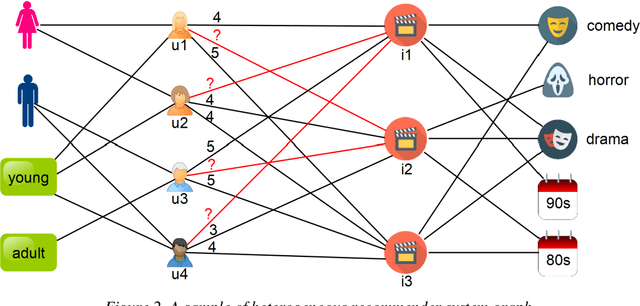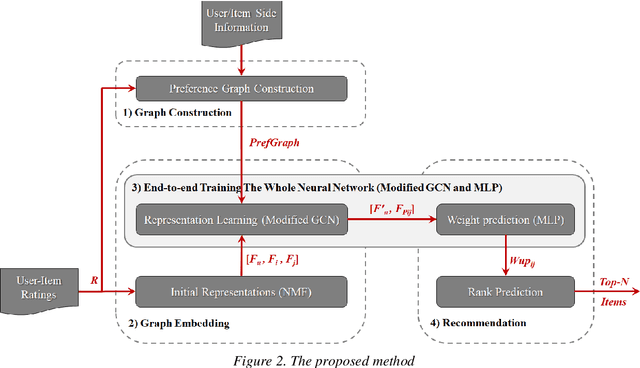Taher Hekmatfar
Attention-Based Recommendation On Graphs
Jan 04, 2022



Abstract:Graph Neural Networks (GNN) have shown remarkable performance in different tasks. However, there are a few studies about GNN on recommender systems. GCN as a type of GNNs can extract high-quality embeddings for different entities in a graph. In a collaborative filtering task, the core problem is to find out how informative an entity would be for predicting the future behavior of a target user. Using an attention mechanism, we can enable GCNs to do such an analysis when the underlying data is modeled as a graph. In this study, we proposed GARec as a model-based recommender system that applies an attention mechanism along with a spatial GCN on a recommender graph to extract embeddings for users and items. The attention mechanism tells GCN how much a related user or item should affect the final representation of the target entity. We compared the performance of GARec against some baseline algorithms in terms of RMSE. The presented method outperforms existing model-based, non-graph neural networks and graph neural networks in different MovieLens datasets.
Embedding Ranking-Oriented Recommender System Graphs
Jul 31, 2020



Abstract:Graph-based recommender systems (GRSs) analyze the structural information in the graphical representation of data to make better recommendations, especially when the direct user-item relation data is sparse. Ranking-oriented GRSs that form a major class of recommendation systems, mostly use the graphical representation of preference (or rank) data for measuring node similarities, from which they can infer a recommendation list using a neighborhood-based mechanism. In this paper, we propose PGRec, a novel graph-based ranking-oriented recommendation framework. PGRec models the preferences of the users over items, by a novel graph structure called PrefGraph. This graph is then exploited by an improved embedding approach, taking advantage of both factorization and deep learning methods, to extract vectors representing users, items, and preferences. The resulting embedding are then used for predicting users' unknown pairwise preferences from which the final recommendation lists are inferred. We have evaluated the performance of the proposed method against the state of the art model-based and neighborhood-based recommendation methods, and our experiments show that PGRec outperforms the baseline algorithms up to 3.2% in terms of NDCG@10 in different MovieLens datasets.
 Add to Chrome
Add to Chrome Add to Firefox
Add to Firefox Add to Edge
Add to Edge